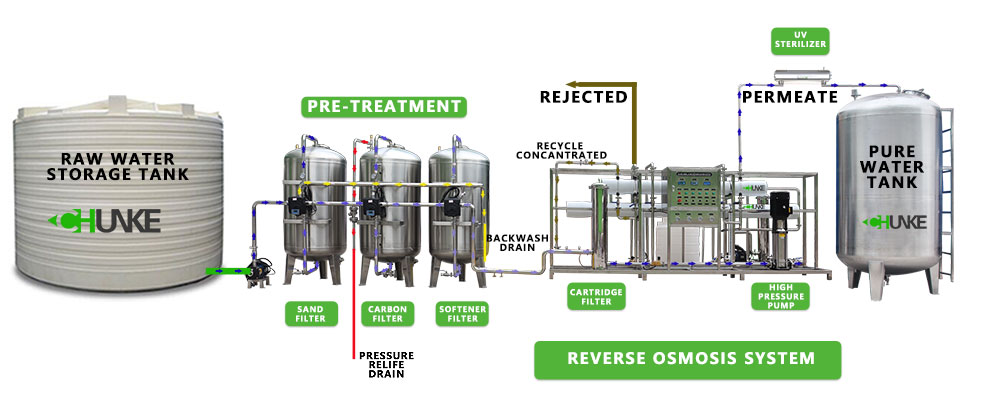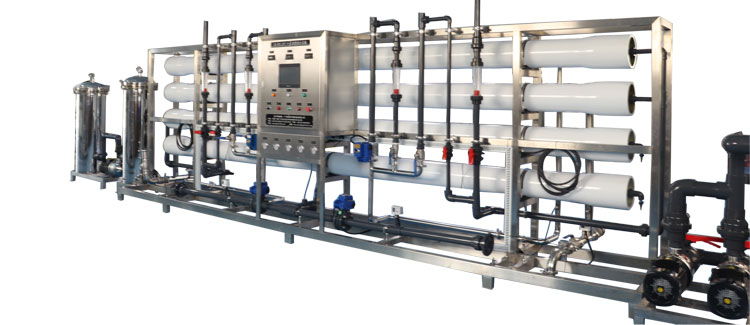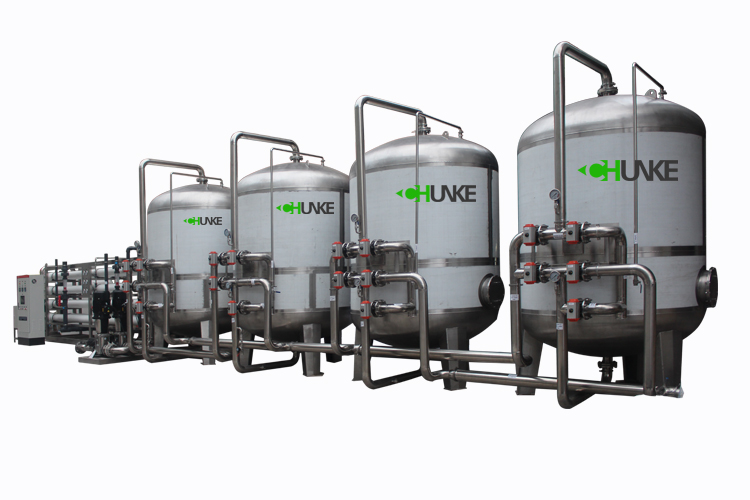What is a water purification model?
Water purification model refers to a system or process for purifying water sources, aiming to remove pollutants, impurities and harmful substances in water to provide clean and safe drinking water or industrial water. These models usually consist of multiple treatment units, each with specific functions to ensure water purification and compliance with relevant standards.

A water purification model usually includes the following main components:
1. Inlet water pretreatment unit:
Before water enters the water purification model from the water source, it usually needs to go through a pretreatment unit, such as a filter, sedimentation tank, etc., to remove large particles, sediment and suspended solids in the water and reduce the impact on subsequent treatment units.
2. Coagulation and flocculation:
In the coagulation and flocculation unit, by adding flocculant and mixing, the tiny particles in the water are aggregated into larger flocs, which facilitates subsequent filtration and sedimentation.
3. Filter:
The filter unit uses different filter materials and filter media, such as sand, activated carbon, ceramics, etc., to remove tiny particles, organic matter and odors from the water, improving the cleanliness and transparency of the water.
4. Activated carbon adsorption:
The activated carbon adsorption unit removes organic matter, residual chlorine and odor in the water by passing the water through the activated carbon bed, thereby improving the taste and quality of the water.
5. Disinfection and Sterilization:
In the disinfection unit, commonly used disinfectants such as chlorine and sodium hypochlorite are added to the water to kill bacteria, viruses and other pathogenic microorganisms in the water to ensure the safety of drinking water.
Through the combination and operation of the above treatment units, the water purification model can effectively remove various pollutants and harmful substances in the water, provide clean and safe drinking water and industrial water, and meet the needs of people's life and production.

How does the water purification model deal with water pollution problems?
As one of the key technologies in the field of water treatment, water purification model plays an important role in dealing with water pollution problems. The following will introduce the response strategies and effects of the water purification model in dealing with water pollution.
1. Multiple filtration and purification: The water purification model uses a variety of filtration and purification technologies, such as mechanical filtration, chemical purification, biological treatment, etc., which can effectively remove various pollutants and harmful substances in the water and improve the purification effect of water quality.
2. Removal of suspended solids through coagulation and flocculation: Through the coagulation and flocculation unit, the water purification model can aggregate tiny particles in the water into larger flocs, which facilitates subsequent filtration and sedimentation, and improves the transparency and purification effect of water quality.
3. Activated carbon adsorption removes organic matter: The activated carbon adsorption unit can effectively remove organic matter, odor and residual chlorine in water, improve the taste and quality of water, and ensure the safety and hygiene of drinking water.
4. Disinfectant sterilization: Adding disinfectants, such as chlorine, sodium hypochlorite, etc., to the disinfection unit can kill bacteria, viruses and other pathogenic microorganisms in the water and ensure the safety of drinking water.
Through the comprehensive application of the above response strategies and technical means, the water purification model can effectively deal with water pollution problems, improve the purification effect of water quality and the safety of water supply, and ensure the needs of people's lives and industrial production.

What is the importance of water purification model in water resources management?
The water purification model plays an important role in water resources management. The following will introduce the importance of the water purification model in water resources management and its role and effect.
1. Ensure water supply safety: The water purification model can provide clean and safe drinking water and industrial water, effectively ensure the safety of water supply, reduce the risk of water source pollution and water source infection, and ensure the improvement of people's health and living standards.
2. Improve water resource utilization efficiency: The water purification model can effectively remove pollutants and harmful substances in the water, improve the utilization efficiency of water resources, extend the service life of water resources, and reduce the waste and pollution of water resources.
3. Promote the sustainable utilization of water resources: The construction and operation of the water purification model can improve the sustainable utilization rate of water resources, promote the rational development and utilization of water resources, and promote the sustainable utilization and management of water resources.
4. Protect the ecological environment: The water purification model can effectively remove pollutants and harmful substances in the water, reduce damage and pollution to the water ecological environment, and maintain the ecological balance and biodiversity of the water body.
Through the comprehensive play of the above functions and effects, water purification model plays an important role and significance in water resources management, making positive contributions to ensuring water security, promoting sustainable utilization of water resources, and maintaining the ecological environment.




